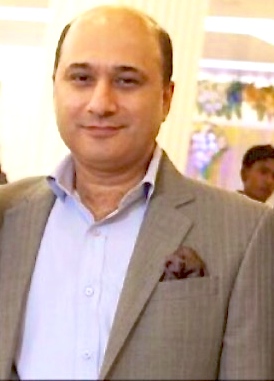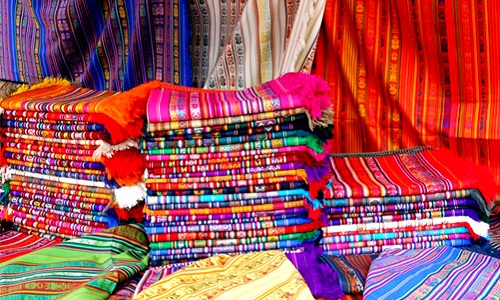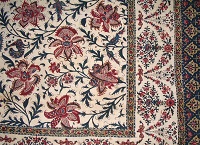FW
A new generation of Hybrid Warp Knit Garments for active wear will be presented in the upcoming ISPO MUNICH 2017 sports trade fair. The fair takes place next week in Munich, Germany from February 5 to 8. Joining forces to create an exclusive and unique range of activewear which brings together companies’ patented knitting technologies and ‘Made in Italy’ flair, are two of Italy’s best known and highly creative warp knitting companies namely Eurojersey and Cifra. With an exclusive mix of Eurojersey’s warp knitted Sensitive® Fabrics technology and Cifra’s warp knit seamless (WKS) technology, the Italian partners say their main objective will be to offer two knitting technologies to provide high performance, functional sport garments with body mapping construction.The resultant merging of the two technologies are hybrid products using the key synergies of two leading Italian companies Cifra and Eurojersey, with an inspiring tailored made collection where aesthetic beauty is strictly linked to function, claims Cifra CEO Cesare Citterio.
Cifra’s WKS, warp knit seamless brings body mapping, areas of ventilation, jacquard patterning and real seamless technology to the collection. With WKS technology, even sleeves and legs are knitted seamlessly into the garment at the knitting stage. The two technologies are connected using ultra sonic bonding to avoid any kind of rubbing or chaffing which can be caused by conventional seaming. Ultra-sonic bonding uses high-energy vibration at frequencies to produce a weld between two components which are held in close contact, in this case, two or more garment components.
Karl Mayer turns 80 this year. The company will organize various in-house shows for its business partners, giving them an insight into the future of textile development and production technology. It will show its next innovation steps – responding to the challenges of digitization and conservation of resources.
Karl Mayer, based in Germany, is a market leader in warp knitting, warp preparation and machinery for technical textiles. In various locations, the group will present its new textile developments covering trends like athleisure, and will show introduction of digitization into the textile industry value chain by expanding the application of its new automation platform Kamcos 2. Sustainability is another important topic for the future. The company has solutions with Low Energy Option for warp knitting machines and Prosize, a sizing system that will save up to 20 per cent resources in fresh water, size agent and waste water.
Latest digital innovations include the Karl Mayer Connect and Karl Mayer check parts apps and the spare parts webshop. They complement the 360 degree service provided by Karl Mayer and guarantee efficient communication with the company’s own technical support staff. They also ensure that the machines operate more economically. Karl Mayer also has some new developments in shoe fabric production and an innovative preparation machine for warp knitting.
The Asia Apparel Expo will take place in Berlin from February 14 to 16. Over 300 companies from Hong Kong, China, India, Bangladesh, Pakistan, Sri Lanka, Taiwan and Vietnam are expected to take part in the show. The trade fair is a professional sourcing marketplace for European companies to meet apparel manufacturers and suppliers from these eight Asian countries. The fair is organised by Hong Kong based Kenfair Exhibition Limited and managed by Comasia Limited.
It is the largest trade show in Europe where clothing professionals can meet Asian factories that offer production of apparel products for men, women and children as well as fabrics and textiles and trimmings and accessories and that are ready to meet European customers’ demands for finished garments, contract manufacturing and private label development. Asia is the world’s number one destination for apparel manufacturing and Asia Apparel Expo connects world-class Asian clothing manufacturers and fabric suppliers, providing low cost, high quality and stable product supply, to European brands, said the organiser.
The sixth edition of the three-day expo is supported by Export Promotion Bureau of Bangladesh, China Council for the Promotional of International Trade (CCPIT) Shanghai Pudong Sub-Council, CCPIT Jiangsu, CCPIT Zhejiang and Bureau of Commerce of Qingdao of China, and The Indian Silk Export Promotion Council and Federation of Indian Export Organisations of India.
Asian countries have developed highly competent, competitive and skilled manufacturing bases with continuous improvements in quality, on-time delivery, customer service, ethical and environmentally-friendly employment practices and working conditions. Six Asian countries (China, Indonesia, Vietnam, Bangladesh, Sri Lanka and India) account for 80 per cent of Asia’s apparel exports to Europe, Americas and Japan.
"XCEL with a recent tie-up with IIGM- the most prominent brand in the complete Garment machinery segment, is looking at immensely benefitting from the association. The XCEL’s products from January onwards will see an improved market representation across India. Launched in 1994, XCEL has a complete range of Ironing, Laundry & Perc dry-cleaning machines. “We are currently producing 52 types of machines in different sizes, capacities and designs through three assembly lines,” explains Deepak Chawla, MD, Xcel Stiro Pvt Ltd."

XCEL with a recent tie-up with IIGM- the most prominent brand in the complete Garment machinery segment, is looking at immensely benefitting from the association. The XCEL’s products from January onwards will see an improved market representation across India.
Launched in 1994, XCEL has a complete range of Ironing, Laundry & Perc dry-cleaning machines. “We are currently producing 52 types of machines in different sizes, capacities and designs through three assembly lines,” explains Deepak Chawla, MD, Xcel Stiro Pvt Ltd.
Talking about the USP of the machines, he says, “There are two key features that set us apart. First, the quality of the machinery & second the presentation. In quality, we believe, there are two kinds of componenets which makes a machine : The fabricated parts and the moving parts. As far as fabricated parts are concerned, they are always die-pressed using mainly stainless steel as the raw material, so the sheet metal always remains in the tolrance limits & other is the use of best quality components as they are always in use during the operation of the machine. We also focus strongly on the aesthetics of the machine which is generally neglected by most manufacturers.”
Higher service at minimal cost

The XCEL’s philosophy is to let the product manufacturing cost be higher and service cost be minimal. Whether the product cost is higher and service cost is lower OR product cost is lower & service cost is higher and, ultimately the user has to spend a certain amount. If that amount is spent on good quality machinery, chances of a breakdown is much less & Less malfunctions means more efficiency and productivity. Servicing is the most essential part of this industry since usage is always high & at all odd hours because in certain cases the Machines are running for 24 hours, so they require maintenance and servicing frequently. Tying up with IIGM with offices in 17 cities makes sense when it comes to services as they are considered to be the most fair practice business house with prominent servicing nerwork. “We are undoubtedly going to be strong in this area with this alliance,” asserts Deepak Chawla.
XCEL sees the partnership as a very positive development. “Our products from January will see improved market representation and more exposure within the industry. The collective efforts are expected to transpire into a great business proposition for both the companies. The IIGM will have the sole rights to market the prodcuts in the southern, western and eastern region & the Northern region will be done togeather. “As of now, our focus is on training their sales and service team to equip them with technical knowhow,” he adds.
”We are one of the top companies in this segment in the country & with this tie-up, we are confident about expanding at a faster pace as compared to other manufacturers. The exposure and reach is going to be unparalleled,” Deepak Chawla explains.
Current market scenario
“There may be some issues in the short run due to demonetisation but In the long term, the market remains excellent & specially with a large family of existing clients, confidence and trust comes automatically among buyers. We make quality products and once people use them, they become our life-long customers.”
Future plans
For XCEL, the tie-up with IIGM has been the biggest step towards future growth. “We have been witnessing about 20 per cent year on year growth & expect to double the sales in the coming year, concludes Deepak Chawla.
"With a perfect ecosystem from fibre to fashion, both in cotton and man-made fibre, an abundant and young labour force, a vibrant domestic market and a good second largest exporter of textiles, apparel and made-ups in the world, textile industry has been a toast of the world. Though, India imports less apparels and made-up, there are specific segments where import is growing rapidly. These include Moisture Management Fabric (MMF) and technical textiles. With wage cost rising and Yuan gaining strength, apparel industry is moving away from China, thereby creating a potential market of $280 billion and more for other countries."
With a perfect ecosystem from fibre to fashion, both in cotton and man-made fibre, an abundant and young labour force, a vibrant domestic market and a good second largest exporter of textiles, apparel and made-ups in the world, textile industry has been a toast of the world. Though, India imports less apparels and made-up, there are specific segments where import is growing rapidly. These include Moisture Management Fabric (MMF) and technical textiles. With wage cost rising and Yuan gaining strength, apparel industry is moving away from China, thereby creating a potential market of $280 billion and more for other countries. India has the biggest chances to capture this growth. Ratika Jain of CII highlights some of the challenges plaguing the growth and what can be done to eradicate those problems.
Challenges on the way ahead

Setting and scaling up: The largest Indian apparel and made-ups factory employs 3,000-4,000 people, large Chinese factories employ over 10,000 people at one place. Some even employ up to 30,000 people. Though attempts have been made to increase the scale in Indian industry but the key issues revolve around labour, land and building, enabling infrastructure such as power and connectivity.
Unfavourable labour environment: The fear of managing large number of employees has discouraged several enterprises from growing. Some states have introduced progressive reforms, still there’s not worthy progress in sight. Issues related to land acquisitions have deterred entrepreneurs from venturing into large scale manufacturing. Our clusters are fragmented and lack clear positioning in the minds of buyers.
High operating cost: It has two aspects. The cost side pressures such as tax, power, wage, wage increases and other is labour productivity. The sector is highly labour intensive. Wage cost can go up from 6 to 8 per cent of the overall cost base in yarn to as high as 30-40 per cent in the case of apparel. Synthetic value chain is poor despite huge raw material base. The lack of local fabric at the right quality and at competitive prices leads us to resort to importing MMF fabrics. This result in loss of drawback on exports of apparel made from such imported fabric. Another issue is differential treatment of cotton. Energy cost is higher in Gujarat and Maharashtra compared to rest of the country, where fabric and yarn production is concentrated. Labour productivity is poor than countries like Bangladesh, mainly due to poor working conditions, insufficient training and high attrition rates.
Market barriers: Higher duty on synthetics and lower drawbacks as compared to competitors is another major factor. This make synthetic segment uncompetitive. The cost disadvantage ranges from 2 to 11 per cent. China has maximum VAT rebate for textile and apparel exporters of 17 per cent, whereas India allows a drawback of around 7-11 per cent.
Logistics challenges: Be it land ports or ports, customs procedures and clearances take more time than other countries. India suffers 2-3 week disadvantage against China and one week gap against Vietnam on logistics.
The way ahead
Since the industry is labour intensive, introduce flexible labour laws; job linked support schemes, innovative hub and spoke models for apparel/textile parks to employ labour in hinterlands and introduce PPP models for Industry to provide scale and create jobs. In India, share of companies with revenue more than 200 million is 3 per cent while in China, it is 14 per cent and in Bangladesh, it is 7 per cent. Bridge the operating cost gap, especially on synthetics. Entrepreneurs need to aggressively drive up productivity by investing in world class facilities, process improvements and build a culture of manufacturing excellence. Simplified tax structures and neutral implementation of GST for both cotton and synthetic products will give the much required boost to the industry. Infrastructure, especially at ports, import facilities and clearance procedures should be streamlined to cut turnaround times.
Signing FTAs with major markets like the European Union can equalise market access positions with key competitors like Bangladesh. Bangladesh has zero duty access to EU, Vietnam is on its way, India has 10 per cent duty, while China has 12 per cent duty on cotton shirt. Increased investments in technology, especially processing and technical textiles either through capital subsidy or technology partnerships. The A-TUFS released in December 2015 has taken welcome steps in this respect. Indian entrepreneurs need to invest both financial and human resources on technology and innovation to address the constantly evolving markets. Investments are required in technical textiles, processing, and apparel making in particular.
India needs to create its own 'Silicon Valleys' for technical textiles, with a full ecosystem of investors, start-ups, production facilities and ultra-fast clearances. Ease of doing business is equally critical for innovation, concludes Jain.
If one has an old Patagonia jacket or sweater, the company is ready to take it back. In a new take-back program that will launch in April, the company will begin offering store credit for used but still usable clothing.
At its repair facility in Reno, California, the largest garment repair center in North America, Patagonia will wash used clothes with a new waterless technology that would help restore the fabric and then make needed repairs. The refurbished garment will be sold on Patagonia's website. The company has long offered repairs if a shirt one bought in 1983 tears in 2017, they'll fix it (for a meagre fee). Promoting reuse between customers was a logical next step in line with the company's aim to limit environmental harm.
The company may sell fewer new clothes if refurbished versions are available a click away. But Patagonia isn't concerned about losing profit. In 2011, when it famously ran a Black Friday ad that said ‘Don't Buy This Jacket’ along with details about the environmental impact of a particular jacket, and an essay about the challenges of consumption, it didn't hurt its sales.
When the company initially asked customers to buy less in 2011, it experimented with various programs, including a partnership to help people resell old Patagonia clothing on eBay. At the time, the company launched a new program called ‘Common Threads’, which promoted four ‘Rs’ viz recycling, reusing, repairing, and reducing consumption.
Notably, H&M also collects old clothing and though some of it is resold in the second hand market, the company is particularly interested in recycling. While recycled fibers are now typically used for lower-grade products such as insulation, H&M is supporting the development of more advanced recycling techniques that can reuse fibers in new clothes.
Bangladesh's commerce minister Tofail Ahmed has said the country’s exports to India have not been growing at expected levels despite duty benefits due to different tariff and non-tariff barriers. With the current imbalance in trade between Bangladesh and India, the minister urged Indian government to hold dialogues to remove the barriers and make way for higher exports from Bangladesh to India. He was speaking on 'India's Integration with South and Southeast Asia' on the second day of a partnership summit held at Visakhapatnam.
India has awarded duty-free access for all Bangladeshi goods except 25 alcoholic and beverage items to the Indian market. But it has imposed a 12.5 per cent countervailing duty on apparel and up to $329 anti-dumping duty on jute exports. The minister hoped those barriers can be removed through discussions. But in the present context, India will have to come forward. Bangladesh has a lot of expectations from its largest neighbour, he said.
The Indian Chamber of Commerce and the Ministry of Commerce and Industries of India jointly organised the annual event where businessmen, ministers and business leaders from home and abroad were present. Bangladesh exported goods worth $689.78 million in fiscal 2015-16 and at the same time, India exported goods worth $5.70 billion to Bangladesh.
To ensure expansion of the cane and bamboo industry of the region, the Ministry of Textiles and Development of North Eastern Region (DoNER) has signed a MoU. The MoU envisages close coordination between the two ministries so that the cane and bamboo sector gets requisite assistance and create employment opportunities in the region. Additional MoUs were signed between different Central and State agencies and investors and promoters.
The two-day Northeast Investors Summit was organised jointly by Ministry of Textiles and Ministry of DoNER in collaboration with industry associations FICCI and CII.The Summit intends to showcase the NE as a global destination for investment and explore the possibility of bringing in convergence of efforts of various ministries and Northeastern States to attract investment in the NE.
Textiles minister Smiriti Irani also announced that from the next academic session master craftsmen from the handloom industry would be giving lessons at National Institute of Fashion Technology (NIFT). Touching on the rich tradition of the handloom and handicraft sector of the region, she said that the Centre has invested in infrastructural projects worth Rs 52,000 crore to help investment opportunities as part of the Act East Policy.
The minister also announced an investment of Rs 820 crores in sericulture sector of the region. She said the investment from the Centre would enable employment of close to four lakh families. Giving out details of the funds sanctioned by the Ministry, Irani said that projects worth Rs 1,040 crores has been alloted for the region for textile promotion schemes in handloom, handicrafts, sericulture, apparel and garmenting.
Increasing competition and rising labour costs in China are forcing apparel makers and retailers from Japan to shift focus away from the country, while some have reverted to domestic production. In 2016, women's apparel company Itokin, headquartered in Tokyo, withdrew all its operations in China after the company concluded that there is no prospect of its earnings improving there. In February the same year, the company was brought under the umbrella of Tokyo-based investment fund Integral. Although the company had 300 stores in China at its peak, intensifying competition with local rivals had eaten away at corporate profits.
Womenswear retailer Honeys, headquartered Iwaki, in Fukushima Prefecture, is well on its way to close its flagship stores and department stores in China. While continuing to open new outlets, it plans to close about 270 stores in the three years through this spring, bringing its total outlet count to 430. According to an official of the company it is not only at department stores but also shopping centers where the competition has been intensifying. Other Japanese apparel companies are reviewing their manufacturing strategies in China too.
Earlier, many Japanese manufacturers moved their production facilities to China in pursuit of cheap labour but increasing labour costs have jeopardized their competitive edge as a low-cost manufacturing. Even though the country is no longer enjoying double-digit economic growth, average wages are increasing by 10 per cent a year.
Currently contributing 5 per cent to India’s GDP and 14 per cent to overall index of Industrial production, the textile sector was once one of the key industrial sectors in India. A study by Wazir Advisors and PCI Xylenes & Polyester says, the sector has potential to grow 5 times to around $ 500 billion market.
However, in recent times, textile companies have been feeling the heat, and many smaller countries have surpassed India in terms of share of exports in the global supply chain. What was once an advantage for India (lower energy, labour costs, compliance costs, etc) is now becoming the advantage of other countries.
Unlike many of its other neighbours, the requirements to manage obligations on energy and environment are stringent in India. Productivity lags behind other producing countries. Thus, new technologies are required and as also skilling staff to use these technologies. But all is not lost for the sector. There is an opportunity to turn things around. Emergence of Big Data Analytics and Industrial Internet of Things (IIoT) provides an amazing tool for the sector to explore and invest in process changes, resource optimisation and technology upgrades to double the energy/resource productivity.
The Indian textile industry with support from government should focus on technology upgrades and doubling resource/energy productivity - extracting maximum value out of its resources (considering that we have our presence in the entire value chain from fibre to garments). Once we do it all other disadvantages would be sort mitigated. Budget provisions will have to care for other business fundamentals but all benefits should help the industry move towards adaptation of new technologies and the utilisation of funds made available to the industry have to reflect progress on these key aspects.













